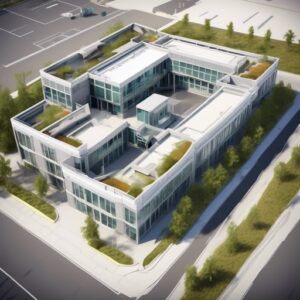In recent years, the healthcare industry has witnessed a significant shift in the way medical facilities are designed and constructed. One of the most groundbreaking innovations in this regard is the emergence of modular medical buildings. These structures, constructed from prefabricated modules, are revolutionizing the landscape of healthcare infrastructure. From hospitals and clinics to laboratories and treatment centers, modular medical buildings offer unparalleled flexibility, efficiency, and sustainability. In this article, we delve into the technology behind modular medical buildings, exploring their construction methods, design principles, and the myriad benefits they bring to the healthcare sector.
Prefabrication Techniques
Modular medical buildings are constructed using advanced prefabrication techniques, which involve the manufacturing of individual building modules in a controlled factory setting. These modules, typically constructed from steel or timber frames, are fabricated with precision and accuracy, ensuring uniformity and quality control. Once manufactured, the modules are transported to the construction site and assembled into the final structure using cranes and other specialized equipment.
Prefabrication offers numerous advantages over traditional construction methods. It reduces construction time significantly, as modules can be fabricated concurrently with site preparation work, thereby accelerating the overall project schedule. Additionally, prefabrication minimizes material waste and on-site disruption, making it an environmentally sustainable choice for healthcare facilities.
Design Flexibility
One of the key benefits of modular medical buildings is their unparalleled design flexibility. Unlike conventional construction, which often involves rigid floor plans and fixed layouts, modular construction allows for customizable designs that can be tailored to the specific needs of healthcare providers and patients.
Modular medical buildings can accommodate a wide range of functions, including patient rooms, operating theaters, diagnostic imaging suites, and administrative offices. Moreover, the modular nature of these buildings enables easy expansion or reconfiguration in response to changing healthcare demands. Whether it’s adding new treatment facilities or integrating advanced medical technologies, modular construction offers unmatched flexibility for future-proofing healthcare infrastructure.
Integration of Technology
The integration of technology is a cornerstone of modular medical building design. These structures are equipped with state-of-the-art medical equipment, IT systems, and communication networks to support the delivery of high-quality healthcare services.
Advanced medical technologies, such as telemedicine platforms, remote monitoring systems, and digital health records, are seamlessly integrated into the design of modular medical buildings. This allows healthcare providers to deliver more efficient and accessible care to patients, regardless of their location. Moreover, modular construction facilitates the installation of energy-efficient systems, such as LED lighting, HVAC controls, and renewable energy sources, reducing operational costs and environmental impact.
Quality and Safety Standards
Quality and safety are paramount in the design and construction of modular medical buildings. These structures adhere to rigorous building codes and industry standards to ensure compliance with healthcare regulations and guidelines.
Quality control measures are implemented at every stage of the manufacturing process, from material selection to final assembly. Additionally, modular medical buildings undergo thorough inspection and testing to verify structural integrity, fire resistance, and infection control measures. By prioritizing quality and safety, modular construction delivers reliable and durable healthcare facilities that meet the highest standards of patient care.
Sustainable Solutions
Sustainability is a core principle of modular medical building design. These structures are designed to minimize environmental impact through energy-efficient design, green building materials, and sustainable construction practices.
Modular construction generates less waste and consumes fewer resources compared to traditional building methods. Furthermore, modular medical buildings can achieve higher levels of energy efficiency through the use of insulation, passive solar design, and renewable energy technologies. By reducing energy consumption and carbon emissions, modular construction contributes to a healthier environment and a more sustainable future for healthcare.
Conclusion
Modular medical buildings represent a paradigm shift in healthcare infrastructure, offering unparalleled flexibility, efficiency, and sustainability. Through advanced prefabrication techniques, customizable designs, and integration of technology, these structures are redefining the way healthcare facilities are designed, constructed, and operated. By prioritizing quality, safety, and sustainability, modular construction is paving the way for a more resilient and responsive healthcare system, capable of meeting the evolving needs of patients and providers alike. As the demand for healthcare services continues to grow, modular medical buildings are poised to play a pivotal role in shaping the future of healthcare delivery worldwide.

